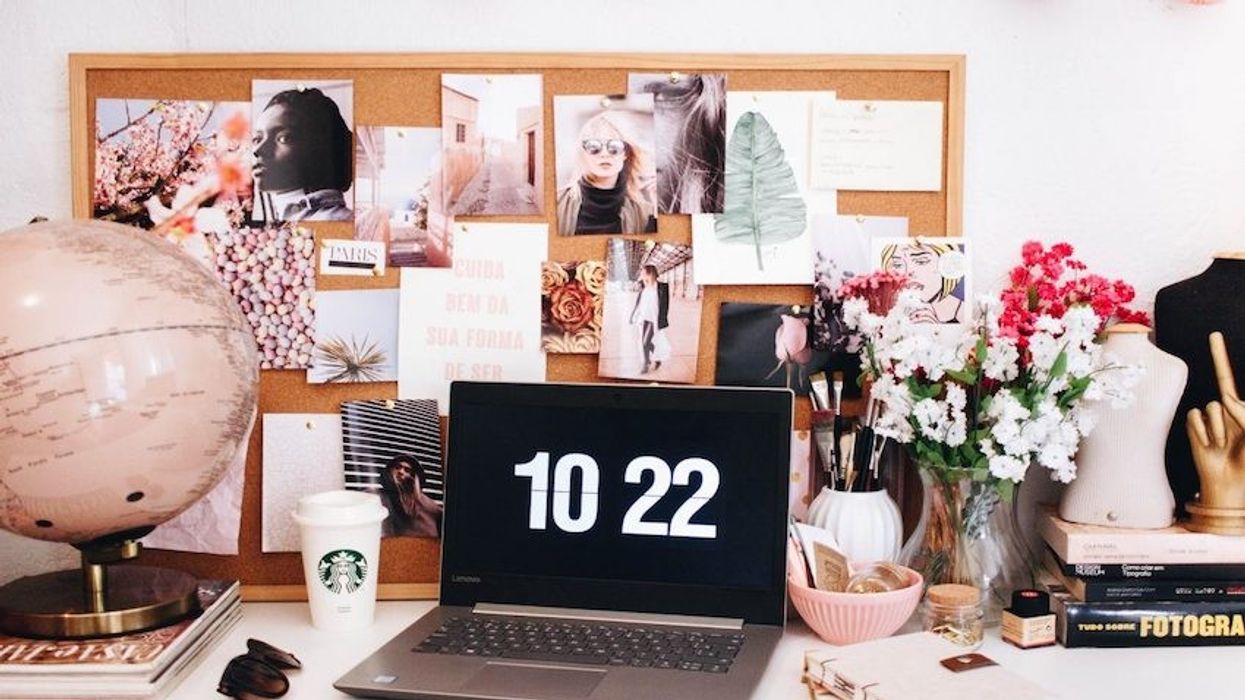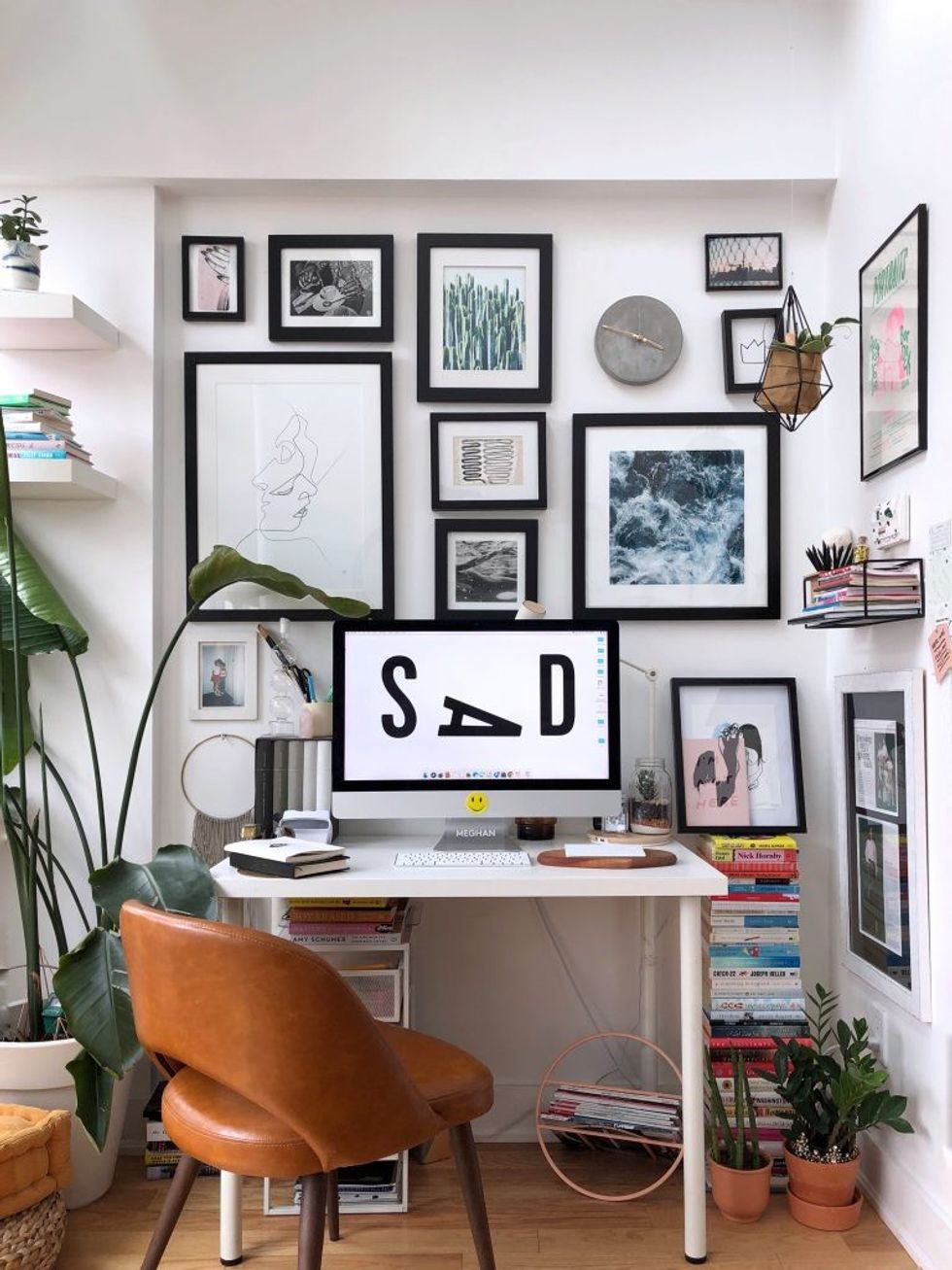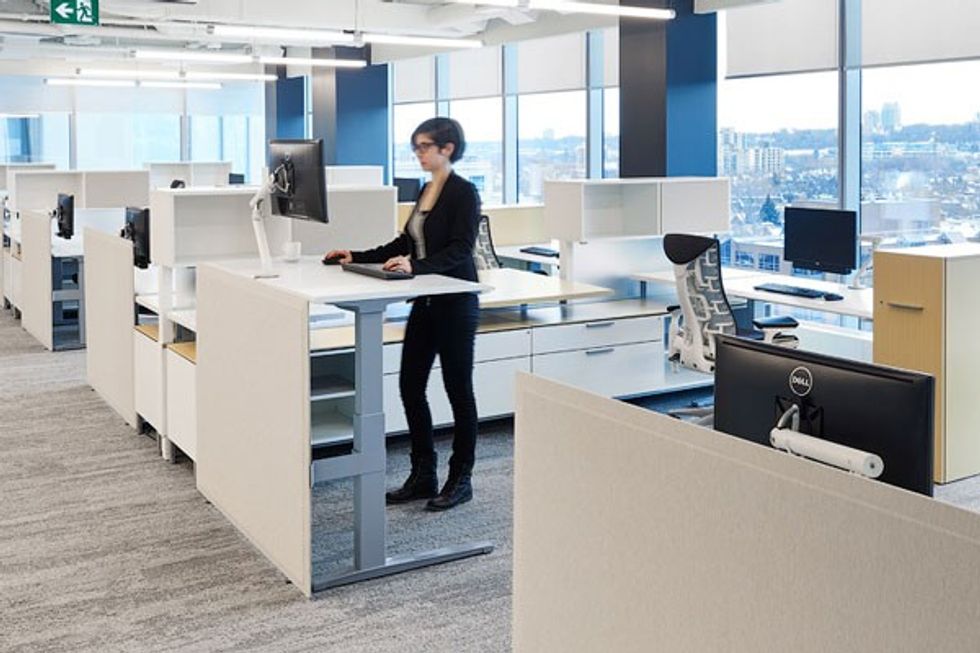As a freelancer, Meghan Yuri Young needed a workspace to inspire creativity and productivity at home.
Unlike 9 to 5 office dwellers, Young had total creative control in creating a home office that balances aesthetics and comfort.
“My workspace blends into my home decor. It's a place of design, inspiration and, of course, practicality,” she said.
“My home is my sanctuary and this space is a true reflection of that.”
According to Statistics Canada, 3.6 million Canadians work from home, at least occasionally, and 1.8 million people who work from home are self-employed. Without the structure of a typical office, it’s easy to get distracted, but with the right elements, studies show working from home can be just as productive.
As a writer, TV personality and advocate for mental health, Young says she carefully curated her at-home workspace with furniture, art and greenery that would motivate her.
“It's important to me to be proud of my space and inspired by it. I have a lot of artwork surrounding my desktop, as well as books. These elements remind me daily why I keep doing what I do,” said Young, founder of The Sad Collective.
“I also have to stay organized, so incorporating a simple set of drawers ensures the surface area isn't too cluttered. Finally, I always need greenery around me... It helps me to stay focused and calm.”
READ: 10 Genius Ikea Hacks That Will Take Your Bedroom To The Next Level
One of the biggest benefits of working from home may be noise control. Mitchell Cohen, Dealer Principal, WSG (Workspace Group), a contract furniture dealer based in Toronto, says noise can cost employees up to 18 per cent in productivity. Something open office employees have to deal with daily. While earbuds may help, Cohen explains the newest trend and available products being introduced in offices are soundproof pods. The acoustic pods come in varying sizes to accommodate a single occupant or up to six people.
“With noise, there is a financial factor on productivity. These pods are movable and seem to be less expensive than building out a fully acoustic room, it’s one of the solutions to the open office noise factor,” Cohen said.
The open office concept is here to stay, says Cohen, who’s been selling office furniture and helping companies design their offices for more than 20 years. But despite emerging trends, the number one piece of furniture that factors in helping employees (both remote and in-office) stay the most productive, is the office chair.
“When you have a good chair, you’re worrying about what’s in front of you and not what your body is feeling, that’s the more important thing,” Cohen said.
One study out of the UK found an ergonomic chair can help increase productivity by up to 10 per cent and employees who felt comfortable at work rated their productivity up to 25 per cent higher than staff who felt uncomfortable.
READ: From Eames Chairs To Highchairs: When Baby Takes Over As Decorator
“A so-so chair creates pressure points, and when you have pressure points, you stand up and move, maybe you’re going for a walk around the block for 10 minutes to feel better and you’re doing that 3 times a day,” Cohen says.
“That’s 30 minutes that you just lost in productivity and now there’s a cost to it.”
A stand-sit or height adjustable desk has also been a trend in many offices and more companies are requesting them. There’s a debate on whether they actually do make people more productive, but Cohen says it can help with group work and communication when designed into an office space strategically.
“Where I find them to be of benefit is when you’re collaborating, if you want to gather round the desk you can raise the desk and can all work on it,” he said.
“When you’re in that open office concept then a couple of them at the end of the row that may be unassigned are great for collaborating.”
With decades of experience in corporate office spaces, Cohen has also helped entrepreneurs and remote workers set up shop at home. His advice for anyone looking to redesign or create a home office is to not only consider design and budget, but also the type of storage they need. When people forget this obvious given in the corporate office, they’ll often leave things in other rooms, or create clutter – hindering productivity.
Cohen also suggests considering the “stuff that moves” such as putting your monitor on a moveable arm to adjust height and proximity, also freeing up space on your desk, adding extra light, an ergonomic chair and possibly a keyboard tray. Being able to move things around your immediate space helps you work more efficiently and comfortably.
READ: How To Create The Perfect Meditation Space At Home
Don’t forget the personal touches either. For Young, it’s not just what’s around her space, but the key tool around her type of work – her computer.
“If you work from home, you spend a lot more time there than anyone else, so make it a place you're happy to be in,” she said.
“Lastly, treat your desktop as an extension of the art around you. Put something meaningful on the screen to make you excited to turn on your computer every day. And organize your files so it's not an anxiety-inducing mess when you do turn it on.”




















